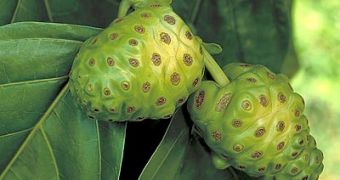In the constant struggle between prey and predators, plants can employ the most disgusting chemical methods to keep away vegetarians.
Even so, co-evolution can make herbivores bypass these defenses. Such is the case of a species of fruit fly, Drosophila sechellia, for example, which enjoys the fruit of a Polynesian shrub named Tahitian Noni (Morinda citrifolia) or "vomit fruit", alluding to its flavor. Other Drosophila flies are rejected by Noni odor, given by the toxins hexanoic acid and octanoic acid, as the fruit is toxic for them.
Lacking competition, D. sechellia ensures in the malodorous fruit a bounteous food source for its larval offspring.
But how can the factors enhancing specialized ecological relationships between herbivore and plants be enough in determining herbivore speciation?
A team at Tokyo Metropolitan University investigated how ancestral flies got the ability to shift on a toxic plant, by comparing the genes linked to behavioral differences between D. sechellia and other Drosophila species.
The team connected the flies' different host-plant preferences to two olfactory genes, odorant-binding protein 57e (Obp57e) and Obp57d.
A mutation of these genes allowed D. sechellia to lose the impulse of avoiding Tahitian Noni. The researchers had already detected the genomic locus that makes D. sechellia's attracted to hexanoic acid and D. simulans to avoid it. The researchers found that the D. sechellia Obp57e gene was not blocked but expressed differently.
The Obp57e transcript levels (gene activity) were the highest in D. sechellia.
The researchers cloned the corresponding sequence from D. sechellia and D. simulans and introduced it into different D. melanogaster stocks.
The sechellia gene sequence contained four additional base pairs.
It seems that D. sechellia's shift to the toxic fruit as larvae food was due to genetic changes that enabled them with resistance to octanoic acid and turned their distaste into a fondness. Perhaps the ancestral flies first tackled with fruit in advanced stages of decay, when octanoic acid have mostly broken down. Behavioral adaptations were due to genetic changes in taste and odor perception.

 14 DAY TRIAL //
14 DAY TRIAL //